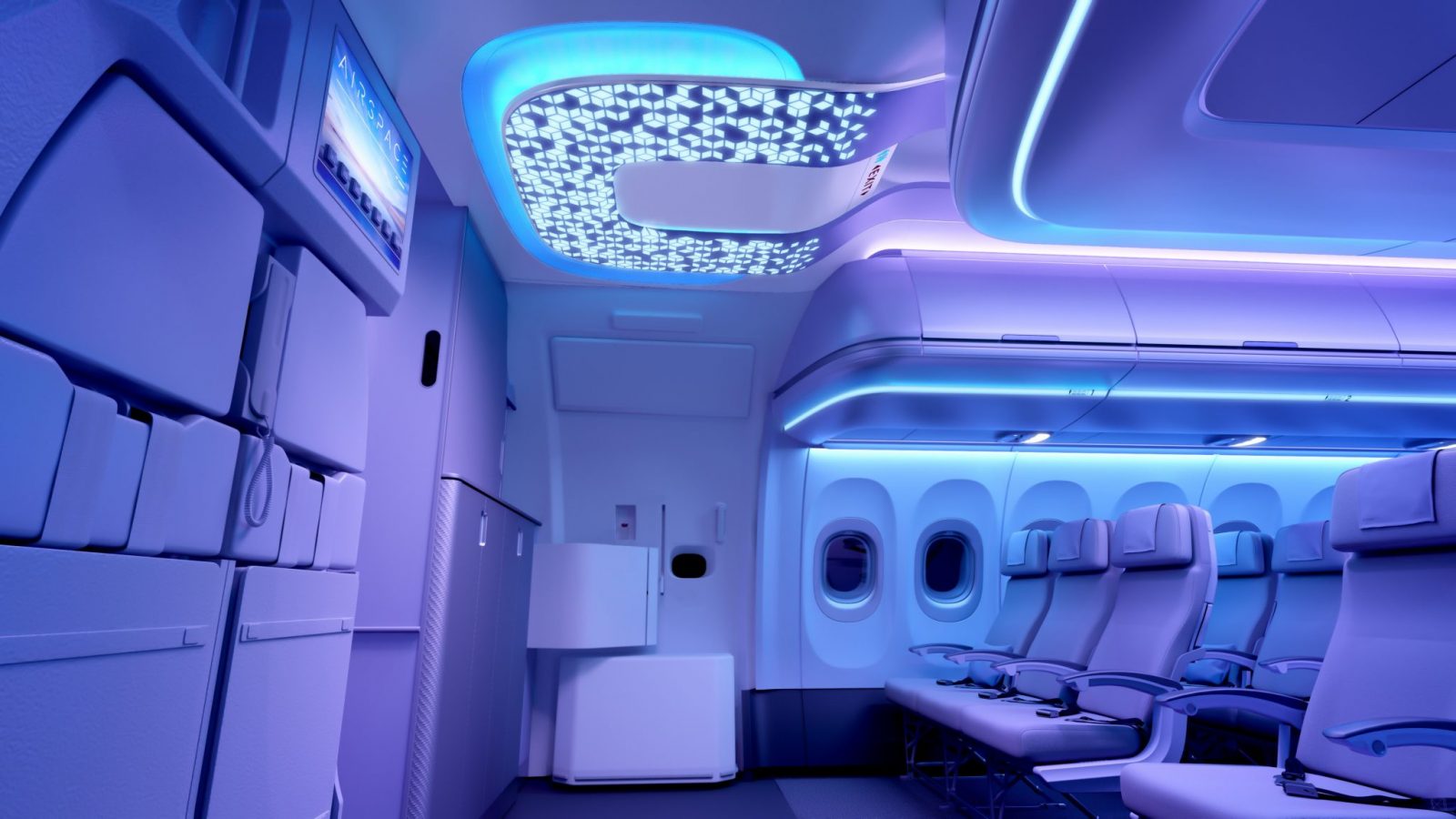
Bigger, brighter, better – that’s what pan-European aircraft manufacturer, Airbus is promising with the introduction of its snazzy looking Airspace cabin interior product for A320 model aircraft. The promise is to bring the same kind of features previously reserved just for long-haul aircraft to the short-haul sector.
Of course, the problem with a short-haul, single-aisle aircraft like the A320 won’t come as much of a surprise. The planes are incredibly popular with airline’s but passengers feel like they’re being crammed into a tiny space. The low ceilings and tight spaces don’t do anything to improve the overall passenger experience.
And things are set to get even worse. Now airline’s are managing to cram even more seats into the same space by reducing both the seat pitch (the distance between seats) and the size of the seats themselves. Redesigned galley’s and lavatories under the Space-Flex project will only compound the problem.
So Airbus is addressing the problem head-on – bringing the same design elements that were first launched on its ultra-modern A350 widebody jet to its short-haul aircraft range.
“Airspace offers the kind of features previously reserved for a few long-haul cabins, so bringing that to our best-selling aircraft family is really going to be noticed by airlines and passengers,” explained Airbus’ Dr Kiran Rao at this year’s APEX Expo in Long Beach.

Others clearly agree with Rao. The company won the award for Best Passenger Comfort Innovation at the APEX Awards ceremony, with judges noting the “consistent experience” that customers could now look forward to.
And now we know which airline’s passengers will first get to enjoy the new experience. That airline, it turns out is going to be New York-based low-cost carrier, JetBlue. The first A320neo with the Airspace interior will be delivered to the airline in late 2020.
“The Airspace cabin is aligned with our efforts to create an experience as comfortable as your own living room,” commented Robin Hayes, JetBlue’s president at the unveiling ceremony.
The airline has been a longstanding Airbus customer and now operates a fleet of 176 A320 and stretched A321 aircraft. JetBlue has more than 100 aircraft still on order with Airbus.

So how does Airspace actually make the passenger experience any better? Well, first of all, there’s the redesigned overhead bins – long the single biggest source of customer woe onboard single-aisle aircraft. The Airspace bin, however, is 40% bigger than the old version with the ability to store 8 carry-on bags in the same space that used to only take 5 bags.
And passengers should start feeling the positive effects of Airspace as soon as they board the aircraft, thanks to what Airbus calls “iconic ceiling lighting”. The same effect continues throughout the cabin with coloured LED lighting and a central lighting strip that’s visible even when those huge overhead bins are open.
Airbus has even found a way to make the cabin feel bigger – even if it hasn’t got much roomier at all. That’s achieved with redesigned cabin sidewall panels that add an inch of width at shoulder height. It’s not much but it might be just enough to give passengers a sense of increased personal space.
Then there’s the new window surround – the actual window is no bigger than before but again, it’s all in the design, hoping to give passengers a greater sense of comfort and room.

For the time being, JetBlue is the only Airspace customer but expect more to be announced soon. Airbus also claims the product is fully retrofittable on existing A320 aircraft although how many airlines’s decide to shell out for a full cabin refit remains to be seen.
One more thing, the Airbus Airspace cabin comes seven years after rival, Boeing launched its own new-look cabin interior for its short haul 737 aircraft. The Boeing Sky Interior boasts many of the same benefits of Airspace – including larger overhead bins, sculpted sidewalls and new lighting options.
Mateusz Maszczynski honed his skills as an international flight attendant at the most prominent airline in the Middle East and has been flying ever since... most recently for a well known European airline. Matt is passionate about the aviation industry and has become an expert in passenger experience and human-centric stories. Always keeping an ear close to the ground, Matt's industry insights, analysis and news coverage is frequently relied upon by some of the biggest names in journalism.







